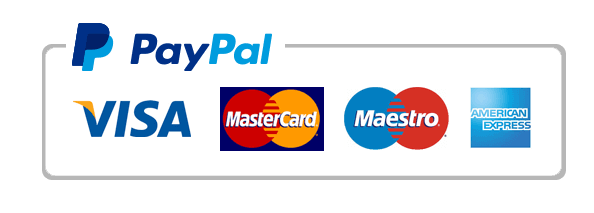Table of Contents
Introduction
The Global Herbal Beauty Products Market is projected to reach approximately USD 163.8 billion by 2033, up from USD 96.8 billion in 2023, exhibiting a CAGR of 5.4% during the forecast period 2024–2033.
Herbal beauty products refer to personal care and cosmetic items derived from natural ingredients such as plant extracts, essential oils, and botanical derivatives, avoiding synthetic chemicals, parabens, and artificial fragrances. These products are formulated with herbs known for their skincare and therapeutic benefits, promoting sustainability and organic beauty solutions. The herbal beauty product market encompasses the global industry dedicated to manufacturing, distributing, and selling these natural personal care items, spanning skincare, haircare, and cosmetic segments.
This market has witnessed significant growth due to increasing consumer preference for chemical-free, organic, and sustainable beauty solutions. Growth factors driving the market include rising awareness about the harmful effects of synthetic ingredients, the increasing adoption of herbal and ayurvedic remedies, and the expansion of e-commerce platforms that enable easy access to herbal beauty products. Additionally, the surge in demand for cruelty-free, vegan, and eco-friendly products aligns with the global sustainability trend, further fueling market expansion.
The demand for herbal beauty products is propelled by health-conscious consumers seeking safer alternatives, the rising popularity of clean beauty movements, and a shift toward preventive skincare. The market is particularly thriving in regions with strong herbal and traditional medicine practices, such as India and China, while North America and Europe witness increasing traction due to growing organic product consumption. Opportunities exist in product innovation, including herbal-based anti-aging solutions, plant-powered cosmeceuticals, and gender-neutral beauty products. Companies investing in sustainable packaging and leveraging digital marketing strategies can gain a competitive edge in this dynamic market.

Key Takeaways
- The global Herbal Beauty Products Market is expected to reach USD 163.8 billion by 2033, expanding at a CAGR of 5.4% from 2024 to 2033.
- Skin care products hold the largest share, accounting for 42% of the market in 2023, driven by the increasing preference for natural and organic ingredients.
- Women represent the dominant consumer segment, contributing to 73% of the market share in 2023.
- Hypermarkets lead the distribution segment with a 41% market share in 2023, reflecting consumer preference for in-store product availability.
- North America holds the largest market share at 36% (USD 34.56 billion), driven by rising consumer awareness of the harmful effects of synthetic ingredients in beauty products.
Herbal Beauty Product Statistics
- A study of 57,000 products from 500 companies found that 83% contained titanium dioxide, a known carcinogen.
- Women use an average of 12 personal care products daily, exposing them to 168 chemicals. Men use six products with 85 chemicals.
- Nearly one-third of beauty products in the U.S. are labeled “clean.”
- 21% of U.S. adults buy organic makeup exclusively or nearly exclusively.
- 76% of Gen Z consumers seek clean beauty products, while 71% of millennials do the same.
- 80% of women in the U.S. wash their hair two to three times a week.
- 34% of women use additional hair treatments beyond shampoo and conditioner.
- An average person has 100,000 to 150,000 hair strands on their scalp.
- The human scalp produces 35 meters of hair fiber daily.
- Over a lifetime, a person grows approximately 590 miles of hair.
- 90% of scalp hair is actively growing, while 10% remains in the resting phase.
- 40% of women experience hair loss during menopause.
- Half of men show signs of baldness by age 50.
- Hair loss of 50% or more results in noticeable balding.
- Four in five beauty shoppers use Instagram daily.
- 67% of consumers trust brands endorsed by their favorite influencers.
- 70% of women over 40 want more age-specific beauty products.
- Africa’s beauty and personal care market is expanding by 8% to 10% annually.
Emerging Trends
- Sustainability and Eco-Friendly Practices: Consumers are increasingly seeking beauty products that are environmentally sustainable and ethically produced. This trend drives brands to adopt eco-friendly packaging and sustainable sourcing of herbal ingredients.
- Integration of Advanced Botanical Science: The incorporation of advanced botanical research and extraction technologies enhances the efficacy of herbal beauty products, attracting consumers seeking scientifically-backed natural solutions.
- Personalized Beauty Solutions: There is a growing demand for personalized herbal beauty products tailored to individual skin types and concerns, driven by advances in technology and consumer data analysis.
- Rise of Clean Beauty Retailers: The emergence of retailers focusing on clean beauty products emphasizes transparency in labeling and the exclusion of harmful ingredients, aligning with consumer preferences for natural and safe products.
- Influence of Social Media and Beauty Influencers: The promotion of natural and herbal skincare regimens by influencers on platforms like TikTok has significantly increased consumer interest and sales in the herbal beauty sector.
Top Use Cases
- Skin Care: Herbal ingredients are widely used in products targeting various skin concerns, such as acne treatment, anti-aging, and hydration, due to their natural properties and perceived gentleness on the skin.
- Hair Care: Shampoos, conditioners, and hair oils formulated with herbal extracts address issues like dandruff, hair loss, and scalp health, offering natural alternatives to chemical-based products.
- Fragrances: Herbal fragrances, derived from essential oils and plant extracts, provide natural and unique scent profiles, catering to consumers seeking alternatives to synthetic perfumes.
- Body Care: Products such as herbal soaps, bath salts, and body lotions utilize natural ingredients to nourish and protect the skin, appealing to health-conscious consumers.
- Cosmetic Applications: Herbal ingredients are incorporated into makeup products like foundations and lipsticks to offer added skincare benefits, aligning with the trend towards multifunctional beauty products.
Major Challenges
- Regulatory Challenges: The lack of standardized regulations and certifications for herbal products can lead to inconsistencies in product quality and efficacy, potentially hindering consumer trust and market growth.
- Limited Shelf Life: Herbal beauty products often have shorter shelf lives compared to synthetic counterparts due to the absence of chemical preservatives, posing challenges in storage and distribution.
- Risk of Allergic Reactions: Natural ingredients can cause allergic reactions or sensitivities in some individuals, which may affect consumer confidence and limit the adoption of herbal beauty products.
- Supply Chain Issues: Ensuring a consistent and sustainable supply of high-quality herbal ingredients can be challenging due to environmental factors and agricultural dependencies.
- Consumer Skepticism: A lack of extensive scientific research and clinical trials supporting the efficacy of some herbal ingredients can lead to skepticism among consumers and professionals, hindering market growth and acceptance.
Top Opportunities
- Product Innovation: Developing new formulations that combine traditional herbal knowledge with modern science can create unique products that meet evolving consumer demands.
- Market Expansion in Emerging Economies: Rising disposable incomes and increasing awareness of natural products in emerging markets present significant opportunities for the expansion of herbal beauty brands.
- E-commerce Growth: Leveraging online platforms to reach a broader audience can enhance accessibility and convenience for consumers seeking herbal beauty products.
- Educational Marketing: Educating consumers about the benefits and proper use of herbal ingredients can build trust and drive adoption of herbal beauty products.
- Sustainable Practices: Emphasizing eco-friendly packaging and ethical sourcing can appeal to environmentally conscious consumers, enhancing brand reputation and loyalty.
Key Player Analysis
The Global Herbal Beauty Product Market in 2024 is characterized by strong competition among key players, each leveraging unique strengths to capture market share. Weleda AG and Dr. Hauschka continue to dominate the premium organic segment with their well-established brand equity and commitment to sustainability. Bio Veda Action Research Co. and Shahnaz Ayurveda Pvt. Ltd. maintain a strong presence in the Ayurvedic beauty space, capitalizing on increasing consumer interest in traditional herbal remedies.
The Himalaya Drug Company and Lotus Herbals Limited are expanding their reach through aggressive product diversification and digital marketing strategies. GROWN ALCHEMIST and INIKA are gaining traction in the clean beauty segment, catering to demand for chemical-free, plant-based formulations. Shenzhen Panni E-Business Co. Ltd. and Guangzhou Liwei Cosmetics Co Ltd. benefit from the rapid expansion of e-commerce in Asia. Meanwhile, Marc Anthony Cosmetics, Inc., Hemas Holdings PLC., and Surya Brasil Organic Beauty Products focus on global expansion and sustainable sourcing, positioning themselves competitively in an evolving landscape.
Top Key Players
- Weleda AG
- Bio Veda Action Research Co.
- Herb Labo Co. Ltd
- GROWN ALCHEMIST
- Shenzhen Panni E-Business Co. Ltd.
- Marc Anthony Cosmetics, Inc.
- The Himalaya Drug Company
- Shahnaz Ayurveda Pvt. Ltd
- Lotus Herbals Limited
- Hemas Holdings PLC.
- Surya Brasil Organic Beauty Products
- INIKA
- Guangzhou Liwei Cosmetics Co Ltd.
- Dr. Hauschka
- VLCC Healthcare Ltd.
Regional Analysis
North America Leads the Herbal Beauty Product Market with Largest Market Share of 36% in 2024
North America dominates the global herbal beauty product market, holding a significant 36% market share in 2024, driven by increasing consumer demand for organic and plant-based skincare and cosmetics. The region’s market is valued at USD 34.56 billion, supported by rising awareness regarding the benefits of herbal ingredients and a strong preference for clean-label beauty products.
The presence of well-established brands, coupled with high disposable income and a growing inclination toward sustainable beauty solutions, has propelled market expansion. The United States leads the regional market, accounting for a major share due to a robust distribution network and widespread adoption of herbal skincare, haircare, and personal care products. Additionally, regulatory support for organic certification and eco-friendly packaging further accelerates the market’s growth in the region.

Recent Developments
- In 2024, L’Oréal has entered into a strategic partnership with Abolis Biotechnologies and Evonik to drive innovation in sustainable beauty ingredients. This collaboration aims to develop and manufacture bio-based components for beauty products, supporting L’Oréal’s commitment to sustainability. The agreement will enable large-scale production of eco-friendly ingredients, reinforcing the company’s focus on responsible beauty solutions.
- In 2025, American Exchange Group has acquired Urban Skin Rx, a clinical skincare brand known for catering to diverse skin tones. This acquisition strengthens AXNY Group’s position in the beauty industry and aligns with its strategy to expand its portfolio with inclusive and innovative brands. Urban Skin Rx will benefit from the group’s extensive distribution network and resources to enhance its market presence.
- In 2025, Tru Fragrance & Beauty has taken full ownership of fragrance brand Lake & Skye. After making a minority investment in 2018, Tru Fragrance aims to scale the brand’s growth and expand its consumer reach. The acquisition will also bolster partnerships with major retailers such as Ulta, Nordstrom, and Blue Mercury, driving further expansion in the fragrance sector.
- In 2023, Shiseido has announced the acquisition of Dr. Dennis Gross Skincare, a leading dermatologist-led brand specializing in science-backed prestige skincare. The agreement, approved by Shiseido’s Board of Directors, was finalized through Shiseido Americas Corporation. This acquisition enhances Shiseido’s portfolio by adding a renowned skincare brand with a strong focus on clinical innovation.
Conclusion
The global herbal beauty products market is growing steadily, driven by increasing consumer preference for natural and organic skincare, haircare, and cosmetic products. Rising awareness of synthetic chemicals’ harmful effects, coupled with the demand for sustainable and eco-friendly alternatives, is fueling market expansion. The skincare segment dominates due to its strong alignment with consumer concerns about safety and effectiveness. North America leads the market, supported by high consumer awareness and strong distribution networks, while Asia-Pacific sees rapid growth due to traditional herbal practices. Social media influence and clean beauty trends further drive demand, despite challenges such as shorter shelf life and regulatory inconsistencies. Companies focusing on innovation, sustainable packaging, and digital marketing are well-positioned for future growth.
Discuss Your Needs With Our Analyst
Please share your requirements with more details so our analyst can check if they can solve your problem(s)





